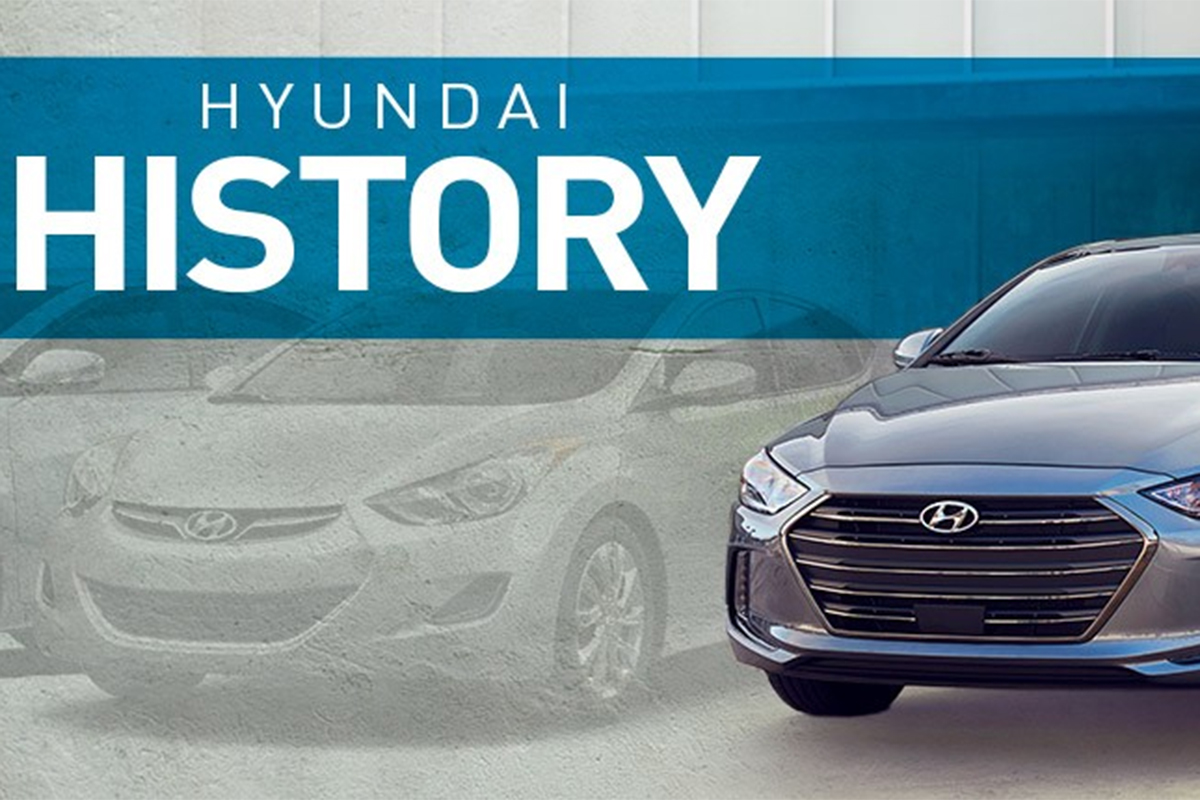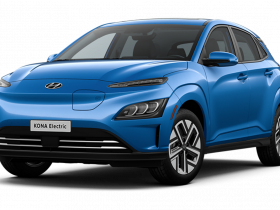For decades, Hyundai has been in the front line of modern car design and manufacturing. The very word “Hyundai” is appositely derived from a Korean word “hanja” meaning “modernity.” Constantly pushing the envelope, the company has a long history of technological innovation.
Also in This Issue
But it hasn’t evolved merely for the sake of evolution. Rather, the firm has always had one goal in mind: building cars of unbeatable quality. These days, Hyundai is more devoted than ever to creating the ideal driving experience.
All of that being said, how did Hyundai get where it is, and where is it headed now? Let’s talk about it.
We all know that Hyundai Motor Company officially launched its brand in 1967, but the origins of the auto giant go back a bit further, to the post-war world of South Korea. It started in 1947, when entrepreneur named Chung Ju-Yung founded a small business called Hyundai Engineering and Construction Company. The aim was simple: to help South Korea rebuild and industrialize after the ravages of World War II.
Unfortunately, the Korean War dashed his hopes and his business plan. Following so quickly on the heels of the last major war, it forced Chung Ju-Yung to abandon the company and instead seek work at the Korean Ministry of Transportation. Although it would be over a decade before the formation of Hyundai Motor Company in the late 1960s, it was there, at the nation’s transportation agency, that the seeds of Ju-Yung’s next project were planted.
Hyundai Motor Company officially got off the ground in 1968 with the introduction of its very first model “the Cortina” which the company collaborated with Ford Motor Company to manufacture the Cortina. The release of the car was the first step in what would be a long and successful journey. Manufactured in the Ulsan plant, in the southeastern region of the country, the car was enough of a hit to encourage Chung Ju-Yung in his undertaking.
Indeed, it was after the rollout of the Cortina that he decided to step up his efforts to create a robust and independent automotive business. In order to realize his dreams of creating high quality, mass produced vehicles for the South Korean public, Chung Ju-Yung brought in a number of British automotive executives and engineers, starting with George Turnbull, formerly the managing director of Austin-Morris.
Together they designed the Pony, released in 1976, which broke ground as South Korea’s very first mass-produced car.
The Pony wasn’t just a one-time wonder. Manufactured in Korea, designed with the help of British engineers, styled by Italy’s Giorgio Giugiaro, built with a 1.2 liter Mitsubishi engine, the car was a truly international product that presaged the worldwide scope of its producer.
It was only a matter of time, before Hyundai began selling its prized creation in the global marketplace. Exporting began with Ecuador, and then quickly expanded to other parts of the world from South America to Europe to North America. In fact, by the middle of the decade, the Pony was the highest selling car in Canada. While Hyundai hadn’t yet broken into the U.S. market, they were developing a starry reputation in many other countries.
Of course, expansion brought with it a number of issues, not the least of which was quality control. While it was relatively easy to sell cars on the new South Korean market, it was a bit more difficult to please foreign car buyers. Executives quickly realized they would have to focus on excellence, as well as expansion, and Hyundai’s long-term strategy of quality growth was born.
Throughout the 1980s, Hyundai grew at a fleeting rate, making huge marks in international markets. It wasn’t until 1986, however, that the company hit one of its biggest goals, that is, breaking into the U.S. market. Initially that proved difficult, owing to strict emissions standards, but before long Hyundai met the challenge with flying colors.
It did so with the model “Excel”, a revised version of the Pony that featured front-wheel drive and low emissions. South Korea’s first American offering hit U.S. markets in two forms: a 4-door sedan and a 5-door hatchback trim, both featuring a 4-cylinder engine. In the end, Hyundai’s little car proved to be an alarming contender on the international stage.
Designed once again by Giorgio Giugiaro, the Pony Excel was conceived specifically for foreign markets. As a cost-efficient alternative to many domestic cars, it proved popular with consumers, (becoming the best-selling imported car of 1986), as well as critics (hitting Forbes’s list of best products). The Excel model proved such a success that Hyundai continued producing it until 1994, when the sleeker Accent arrived.
Despite an initially strong showing, Hyundai wasn’t entirely satisfied. Still under the leadership of founder Chung Ju-Yung, it wanted to push the envelope once again in its constant drive to improve quality and boost standards. Over the next few years, the company would make huge advances in design and technology, and, by the early 21st Century, Hyundai had become one of the world’s top car manufacturers.
Nowadays, while many things have changed, much else has remained the same. Hyundai’s main plant is still located in Ulsan, where it produced its very first car, only now it is the single biggest integrated car manufacturing center in the world. A testament to the progress the company has made since its humble beginnings as South Korea’s first mass vehicle producer. With an annual production capacity of 1.6 million units,
Only, these days, it’s not all about quantity. Today the company is more than ever committed to “adding premium value into customers everyday lives,” to use the words of CMO/EVP Wonhong Cho. With models under its belt ranging from the Santa Fe to the Sonata, all of which continue their long runs at Hyundai car dealers around the country, it has produced a whole new generation of vehicles that emphasize exceptional design and superior technology.
For example, Sonata is notable not only for being the manufacturer’s flagship mid-sized sedan, but also for pioneering the brand’s new design philosophy of fluidic sculpture. With an emphasis on natural forms and dynamic curves, Hyundai’s visionary theory has put it at the forefront of automotive design.
Over the years, Hyundai has expanded well beyond its initial comfort zone as the budget-friendly, foreign alternative. In the past few decades, it has continued to roll out not only great cars for everyday use, but also specialty and high-end vehicles.
Consistently ranking in the top tier of the World Rally Championships, the company has regularly demonstrated its commitment to superior engineering and state-of-the-art technology. Today, Hyundai is exceeding expectations once again, improving its quality, cultivating its relationships with customers, and moving into the luxury sector with an entirely new brand called Genesis.
Although Hyundai has had an incredible ride so far, it looks as if the best is yet to come. As the company moves into new markets, expands its line of vehicles, and once again pushes the envelope of quality and ingenuity, the public is in for even more surprises. For new or loyal Hyundai customers, the future looks brighter than ever.


Leave a Reply